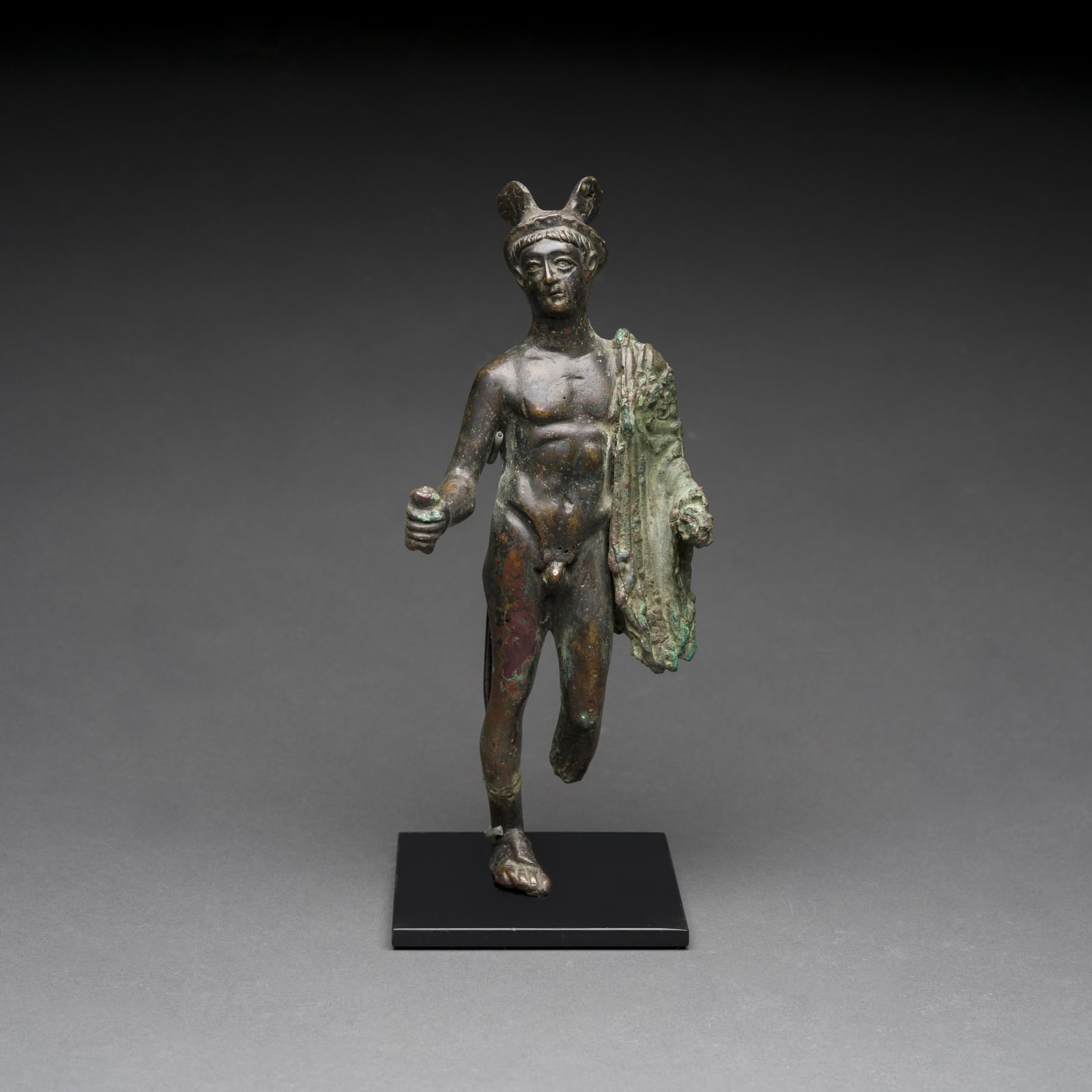Roman Bronze Sculpture of Mercury, 1st Century CE - 3rd Century CE
Bronze
height 22.2 cm
height 8 3/4 in
height 8 3/4 in
X.0183
Further images
Swift footed, Mercury (known to Greeks as Hermes), the messenger of Jupiter and herald to the gods, was the patron deity of travelers, gamblers, tricksters, and businessmen. To him is...
Swift footed, Mercury (known to Greeks as Hermes), the messenger of Jupiter and herald to the gods, was the patron deity of travelers, gamblers, tricksters, and businessmen. To him is ascribed the introduction of deploying embassies in the capitals of foreign empires in order to broker peace through diplomatic channels instead of war. Mercury, the robber and cattle driver, the prince of thieves at the gates, the bringer of dreams, the patron of travelers, is also credited with assisting the Fates during the creation of the alphabet, securing his role as the governor of the tongue and the guide of intelligent speech. He also invented the lyre from a tortoise shell and gave this musical instrument to Apollo who, in turn, gave Mercury a caduceus, the golden staff crowned by wings and intertwined with serpents--symbol of today's medical profession. Mercury is sometimes called Argiphontes, for having killed the all-seeing Argos I who guarded Io. He is also referred to as Psychopompus in the context of his role as the guide of the souls of the deceased to the Underworld.
Here, Mercury stands nude in a classic contraposto pose with his weight resting on his right leg, leaving his left leg relaxed with his knee slightly bent. A piece of drapery flows across his chest and falls along his left arm. His head is angled down and slightly to the right and a laurel wreath crowns his short curly hair. His identity is confirmed by the money sack he carries in his right hand and by the petasus that crowns his head. The petasus is a wide brimmed hat characteristic of travelers; here, it is winged, indicating Mercury’s swiftness and symbolizing his wisdom. The sculptor of this work was certainly inspired by 5th Century B.C. Greek original by the great master Polykleitos. No doubt this gorgeous work of art was revered in its own time. Libations of rich wines and perfumed oils might have been placed nearby to honor the invoked deity. However, while the great pantheon of Greek and Roman gods and goddesses has faded into the realm of myth, this sculpture still stands as a stunning work of timeless beauty. Who knows, maybe this work will conjure up the spirit of Mercury, who might bless us with successful business dealings and safe travel? In our world – as in antiquity – this seems the ideal work of art for someone who charts a swift and successful course through time.
Here, Mercury stands nude in a classic contraposto pose with his weight resting on his right leg, leaving his left leg relaxed with his knee slightly bent. A piece of drapery flows across his chest and falls along his left arm. His head is angled down and slightly to the right and a laurel wreath crowns his short curly hair. His identity is confirmed by the money sack he carries in his right hand and by the petasus that crowns his head. The petasus is a wide brimmed hat characteristic of travelers; here, it is winged, indicating Mercury’s swiftness and symbolizing his wisdom. The sculptor of this work was certainly inspired by 5th Century B.C. Greek original by the great master Polykleitos. No doubt this gorgeous work of art was revered in its own time. Libations of rich wines and perfumed oils might have been placed nearby to honor the invoked deity. However, while the great pantheon of Greek and Roman gods and goddesses has faded into the realm of myth, this sculpture still stands as a stunning work of timeless beauty. Who knows, maybe this work will conjure up the spirit of Mercury, who might bless us with successful business dealings and safe travel? In our world – as in antiquity – this seems the ideal work of art for someone who charts a swift and successful course through time.





